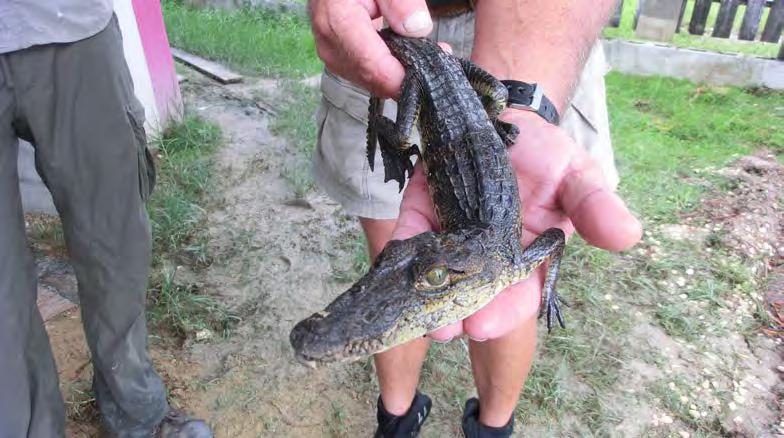Cherie Renee Chenot-Rose
Other projects
9 Dec 2010
American Crocodile, Crocodylus Acutus, Population and Habitat Viability Assessment and Conservation in Ambergris Caye, Belize I
This project aims to continue monitoring population demographics and available habitat viability of threatened American crocodiles, focusing on water and tissue sampling for toxicity testing.
The American crocodile, Crocodylus acutus, is recognized by The Crocodile Specialist Group as a species in critical need of conservation. While Belize is considered the last stronghold for this species, the most recent publication by The Herpetological Bulletin, Spring 2009, states that surveys suggest there are fewer than one-thousand (1000) non-hatchling C. acutus in all of Belize, and that the highest nesting activity occurs on Turneffe Atoll. With documented numbers of crocodile encounters and nesting sites decreasing on Turneffe Atoll, this project is focusing on American crocodile population demographics and available habitat viability on the nearby Ambergris Caye.

Located a little over 35 km northwest of Turneffe Atoll, and the largest caye in Belize, Ambergris Caye is a coral sand island protected by the Mesoamerican Barrier Reef System on the East, and endangered red mangrove (Rhizophora mangle), and fresh, brackish, and saltwater lagoons on the West. These critical wetland habitats are home to highly threatened American crocodiles. Additionally, Ambergris Caye, Belize’s premier tourist destination, has the highest number of reported croc-human conflicts in the country.
Data collected, by this researcher, over the past two years in Ambergris Caye suggests that the number of successfully reproducing American crocodiles in Belize may be even lower than “the extrapolated” projections. In conjunction, several large, wild American crocodiles have been found exhibiting signs of illness. Thus, crocodile habitats will be evaluated by testing waters for levels of Ammonia Nitrogen, Ammonia, COD, Nitrate, Dissolved Oxygen, pH, Phosphates, Potassium, Coliform bacteria, pesticides Atrazine and Simazine, and Mercury. These tests will identify possible water quality conditions that could be leading to the observed signs of illness in the species, such as the absence of teeth, skin discolorations, diaphanous teeth, sunken or severely bulging supertemporal fossae, abdominal bloating, and peeling scales/scutes.
Finally, if permitted by the Conservation on International Trade in Endangered Species (CITES), collected scute (tissue) samples will be exported to the University of Florida, USA, for toxicity testing by collaborating Dr. Frank Mazzotti, Dr. Thomas Rainwater, and Gareth Blakemore.
A significant asset to the conservation of crocodiles and their critical habitats, this project will provide key information to maintaining a self-sustainable population of American crocodiles in Belize. Working with communities during data collection, this project also presents the opportunity to educate people about the importance of crocodiles in maintaining ecosystems and how to safely coexist with them, thus reducing croc-human conflicts.